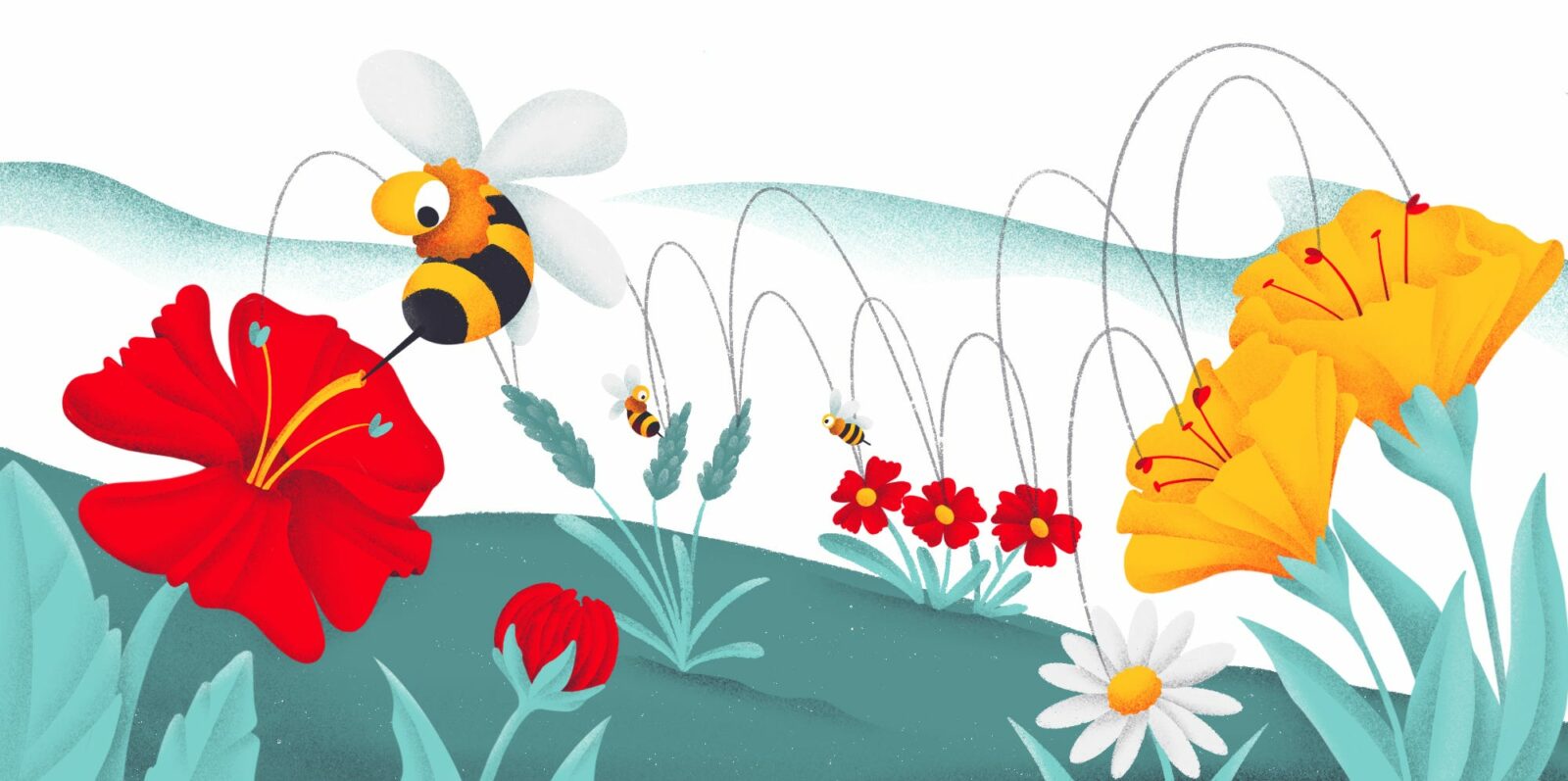Interaction Quotient
Published in ATÖLYE Insights · 20 min read · July 23, 2019
A data-driven guide to quantifying interactions among the community
Author: Atılım Şahin, Creative Hub Director, ATÖLYE Editor and translator: Gizem Ünsalan, Communications Associate, ATÖLYE
In this article, we will introduce the "Interaction Quotient" system, which we brought to life at the end of 2017 to quantify the interactions among the ATÖLYE community comprised of both staff and members. We will also discuss how this system serves the unity of the community as well as its practical application.
We hope this article will inspire all creative hubs and provide a new outlook to community managers who reflect upon the challenging process of measuring the dynamics that strengthen the building blocks of communities.
1. Measuring purpose-driven contribution
The first important step to take in designing the communities addressed by creative hubs is to clearly define the "purpose" of these communities. However, it's just as important to use the right methods when gauging the success of steps taken towards that purpose.
The goals defined in service of the purpose will vary depending on the hubs' vision. ATÖLYE is a hub that believes it "grows" by strengthening the quality of the connections between people, not by increasing the number of its community members. By that same token, there's an inevitable need to define new goals in terms of relationships between people in the community and to develop tools that measure these interactions, independently of any goals that may be set for the purpose of financial sustainability.
This is how we define our purpose in bringing together the ATÖLYE community:
"To create a learning environment where community members support one another professionally and socially, where they improve capacity to unveil their own potential and where they collaborate on projects that generate long-term value."
From our very first meeting with potential community members, we take great care to communicate this purpose and gauge their approach. People's desire to contribute to this shared purpose is the number one requirement among the curation criteria we adopt when deciding who will join the community. To us, contributing to the defined purpose is much more important than adhering to the other criteria sought for inclusion in the community. Through this curation process, we strive to bring together people who are open and willing to contribute to the community's purpose.
At this juncture, we encounter questions such as these:
How might we measure the success of our community in achieving this purpose?
How might we create an incentive mechanism that not only encourages community members to contribute more but also gives greater visibility to their contributions?
Seeking answers to these questions is what directed us, step by step, to design the "Interaction Quotient" system. Interaction Quotient is not only a measurement system but also an incentive mechanism that encourages contribution to the purpose of rewarding active community members.
From mid-2016 to the present, we at ATÖLYE adopted a reward mechanism where we gave one month of free membership to everyone who collaborated with one another on five different projects. We could define this as one of the first steps in the "Interaction Quotient" system.
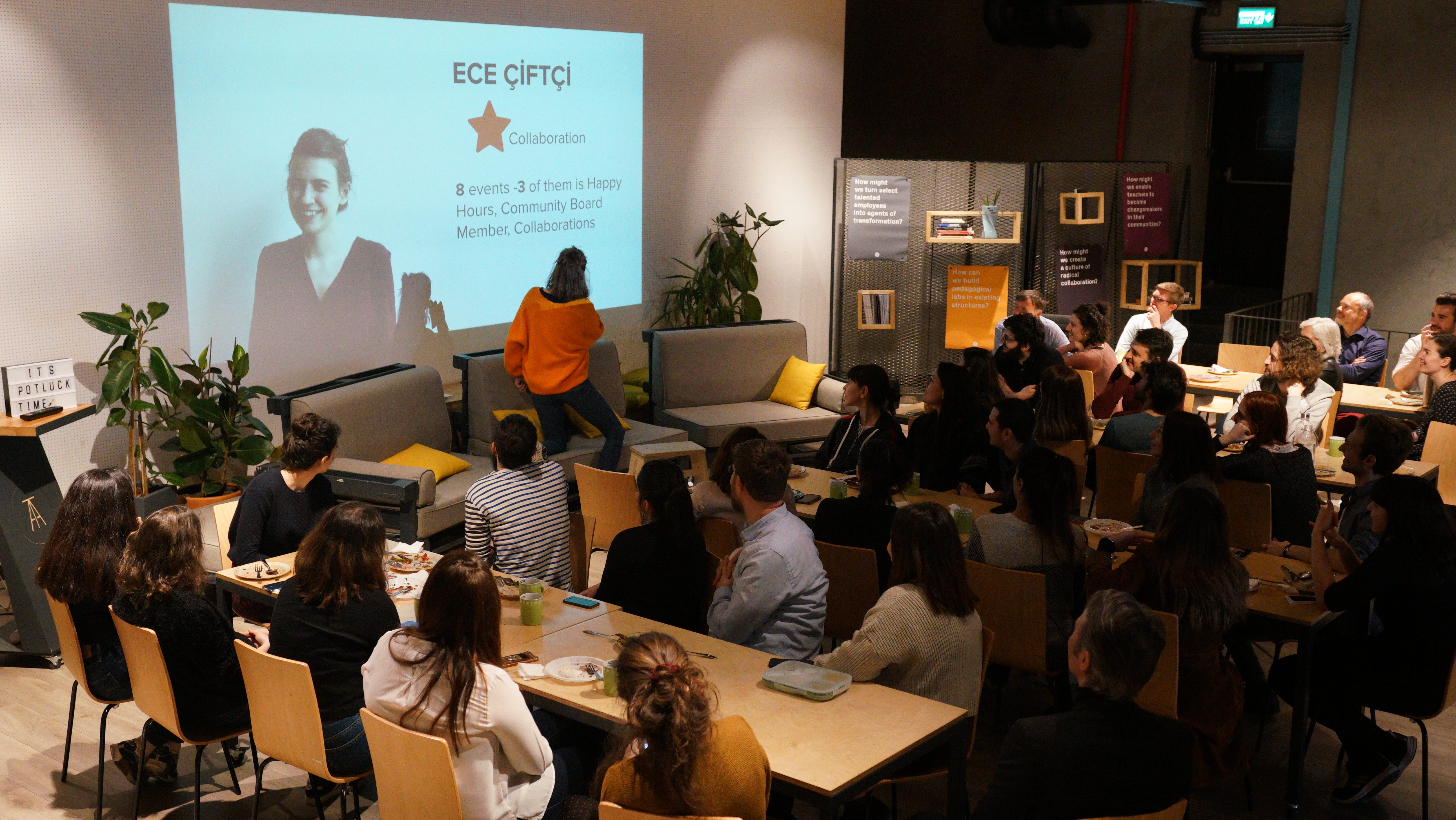
Operating a reward mechanism has been quite effective in terms of systematically reminding the community of our purpose in coming together, as well as inspiring people towards that purpose.
Thanks to the system, many collaborations that previously went unnoticed came to light. In this process, we gifted 5 members with one month of free membership based on their particular membership package*. On the other hand, the system made it easier to comprehensively gather details on collaborations that normally don't yield data easily. We took information on projects, documented by collaborators on a form, and mapped it on the Graph Commons platform to give them visibility.
By the time we reached the end of 2017, we noticed that our incentive mechanism had a serious shortcoming. Defining people's presence in the community solely via "collaborations on projects" and encouraging them only in this sense was a narrow-minded approach. After all, as mentioned above, this wasn't the only reason we brought together the community. Fundamentally, we referred to 3 separate tiers in our community purpose statement.
1. Association (...where community members support one another professionally and socially...)
2. Transformation (...where they improve capacity to unveil their own potential...)
3. Collaboration (To create a learning environment where community members... collaborate on projects that generate long-term value.)
Naturally, these tiers are intertwined in every sense of the word. What's more, it's quite difficult to form a hierarchical relationship between them. No matter how much we value collaborations, our experience thus far has shown us that the actualization of collaborations directly correlates to the proper management of the first two tiers (association and transformation). That's why the role of social and professional interactions among community members and the organic flow of information initiated by these interactions is quite critical.
We built our "Interaction Quotient" system around the comprehensive measurement of these interactions, which perhaps play the biggest role in fulfilling our purpose. In our current integrated system, working on a project with another member is only one of the instruments to interaction.
2. Why are interactions important to us?
Even if we guarantee sure that the soil is in perfect condition, unless we're able to ensure pollination from one plant to another, it would be in vain to expect fruit to grow. Similarly, even if some incredible people are brought together under the right circumstances in creative hub communities, failing to ensure the healthy flow of information and interaction among them will prevent us from harvesting the fruits of this union.
"...when we think of our organizations as idea-processing machines that harvest and spread ideas primarily through individual interactions, then it is obvious that we must establish healthy patterns of idea flow. The obvious idea is that by making the patterns of interaction visible to everyone, everyone can work together to create better patterns of idea flow."- Alex Pentland, Social Physics
In his book Social Physics, Alex Pentland argues that the potential for creativity and innovation among groups of people can only be brought to light when there is a regular flow of information. He then goes on to assert that the way to achieve this information flow is through the creation of interaction patterns.
These interaction patterns pave the way for Exploration and Engagement, which could be counted among the fundamental dynamics that form the community. Through touchpoints created for interactions, community members start to explore what they find different and engage with what they find familiar. While we learn new things thanks to the differences between us, our similarities and commonalities are the foundations on which we build trust.

"A successful formula for creating ties for innovation is to find other groups that are both similar and different than your own. Similarity helps build trust, while diversity introduces new ideas and perspectives."
— June Holley, Building Communities Through Network Weaving
Interactions serve as a catalyst for the flow of information. And we can only reap the fruits of collaborations that may lead to unexpected breakthroughs when we ensure that the flow of information is balanced.
3. Defining interaction patterns
The word "interactions" may suggest that we're talking about an abstract whole that's nearly impossible to define.
Simplifying this complicated whole into smaller, more tangible and quantifiable units will help us gain a better understanding of the touchpoints that lead to interaction.
We believe it's necessary for each community member to bring his or her authentic character to the community and for everyone to contribute to the community's purpose from a different interaction channel. This approach compels us to plan the variety of our interaction channels.
At ATÖLYE, we assess interactions via two axes, based on their attribute (Professional and Social) and their outlet (Physical and Digital). We also strive to ensure that the common ground for all interactions paves the way for Exploration and Engagement.

a. Interaction attributes
We divide the attributes of community interactions into two categories: professional and social. As indicated in our purpose statement, we care about our members supporting one another in these two areas. Not only are these two almost inextricably linked, but when we strike the right balance between them, it greatly helps us make strides towards our defined purpose.
The touchpoints that fuel professional interaction include activities like community members collaborating on projects, supporting one another in their efforts, referring jobs to one another, sharing their professional know-how with the community via workshops or 101 courses, or describing their ongoing projects in feedback sessions to hear others' ideas. We greatly value that people share new information with one another and explore what's happening outside of their own profession via these activities. Over time, this Exploration turns into Engagement through collaboration on projects.

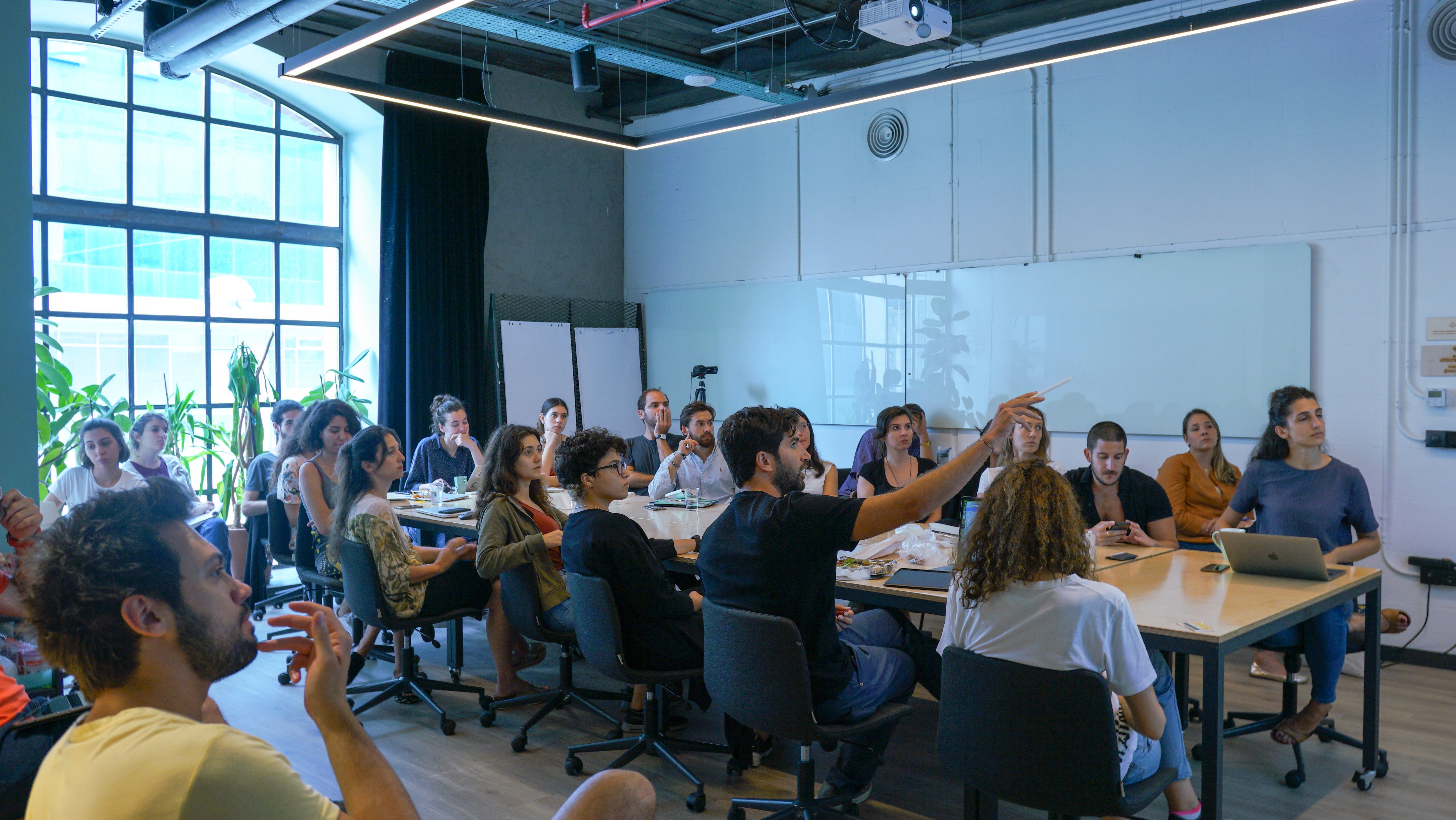
On the other hand, social interaction is fueled by activities that aim to bring people together socially, such as our Potluck Lunch ritual; Happy Hour gatherings; Journal events where community members share experiences with out-of-town tours, conferences, etc.; game tournaments; 5 o'clock teas; rhythm circles; movie nights; as well as yoga and outdoor activities. These types of events give people the chance to come together and discover what they have in common. By providing a setting where people can discuss their commonalities and even, at times, their vulnerabilities, we greatly contribute to the rise of a sense of trust within the community. This often paves the way for new friend groups to form and new friendships to emerge.
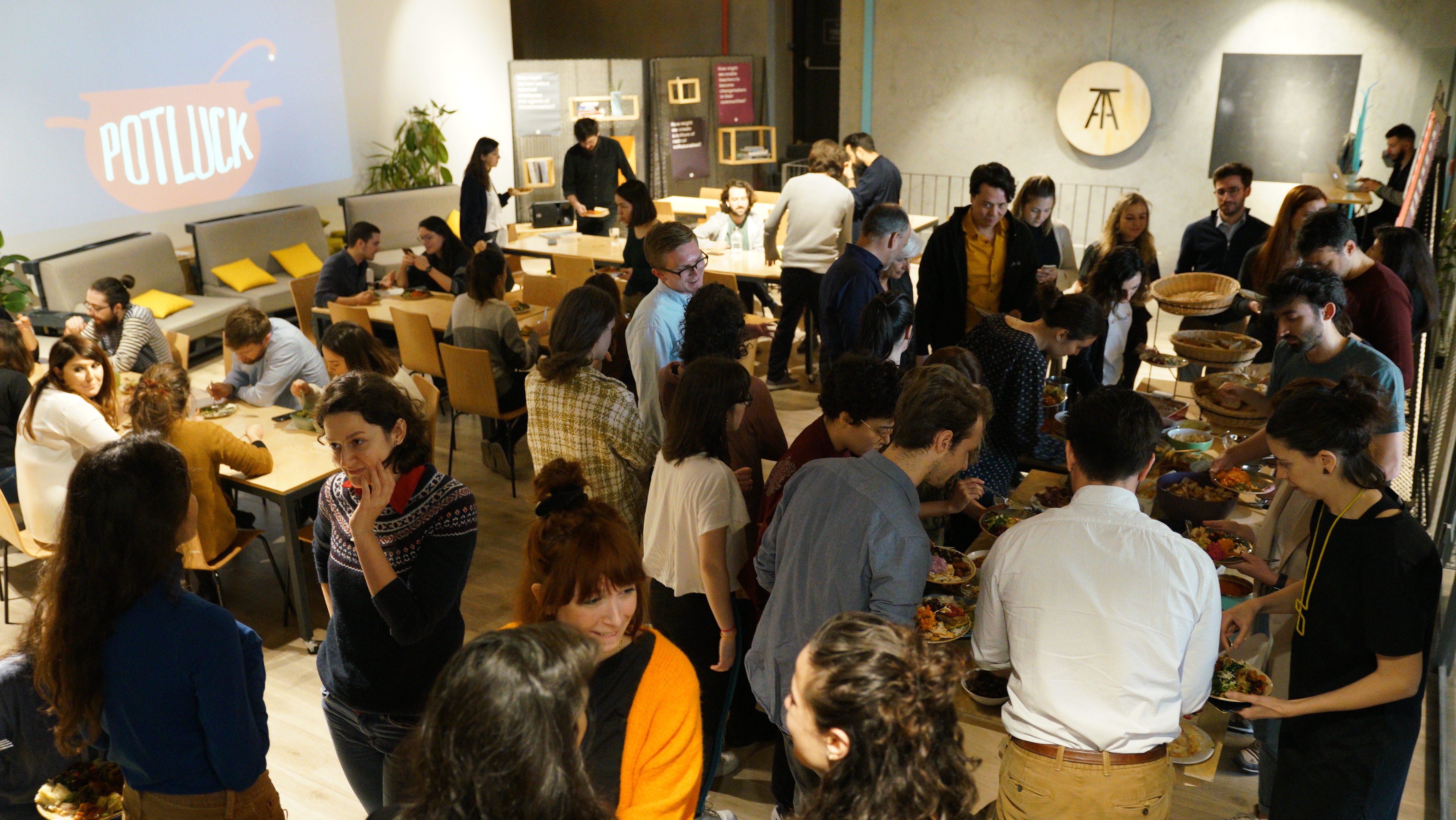
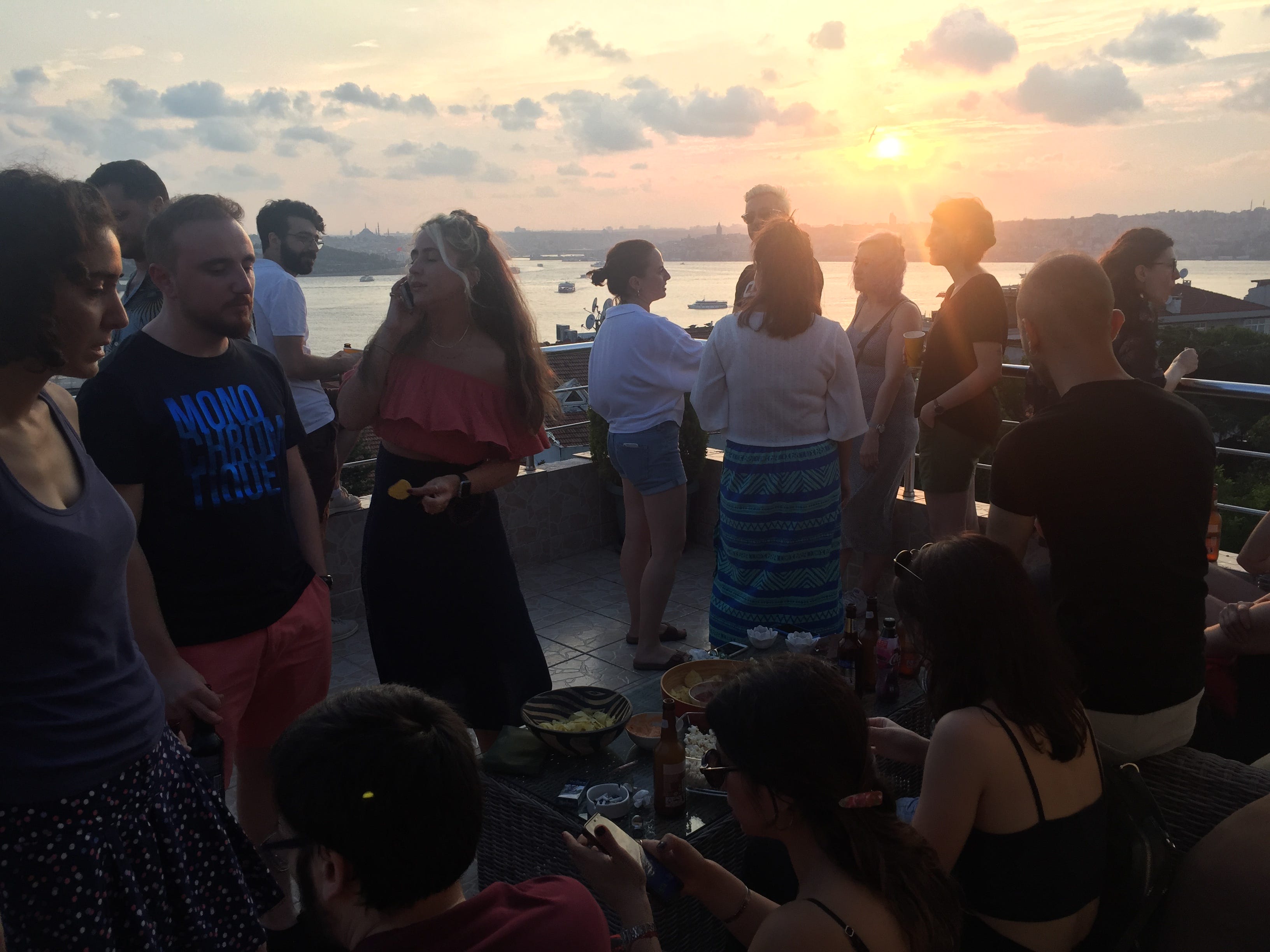
b. Interaction outlet
At ATÖLYE, we divide the outlets for interaction among community members into two: physical and digital.
We adamantly believe that our members should be physically present at ATÖLYE. Members who don't frequent the space despite paying their membership fees might be a godsend for some coworking spaces. Yet in our case, being physically present in the space constitutes a prerequisite for many of the interaction channels listed above.
Our experiences thus far have shown us that interactions, where members are physically present at ATÖLYE, encourage people to Engage much more than digital interactions. That's because we're not really able to build the same trust online as we do with people we see in person, with whom we share a space. With that being the case, we don't hesitate to get in touch with members who don't frequent ATÖLYE despite having a regular membership that allows them use of the space. We tell these members we value their presence at ATÖLYE and we long to see their faces. To that end, when we assess membership applications, we generally prefer not to prioritize the membership of candidates who have a low chance of being physically present in the space due to their profession.
While we prioritize physical interaction, we don't deny the importance of interaction via digital outlets, either. We strive to maintain the continuous flow of information in the community via e-mail groups, Slack channels, and weekly newsletters. Interactions in these outlets predominantly meet the community's need for Exploration. This also helps to explain why our #share-inspire channel on Slack is among the most actively used.
Members who spend some time in our community but must physically leave due to reasons like relocation, a new job, etc. often don't want to leave the community altogether. In those cases, these members can opt for a "digital membership" package, which allows them to remain active in our digital interaction channels. With this package, members continue to benefit from every resource except for the use of the workspace. We only offer a digital membership to those who have been a physical member in our community for at least 3 months. In other words, it isn't possible for a newcomer to apply for a digital membership in the ATÖLYE community. That's because we believe generating an environment of trust is only possible through sharing the same space and breathing in the same air.
4. Measuring interactions
Once we understand which channels initiate interaction in the community and we examine how these channels serve our purpose, it becomes much easier to quantify them.
As of the end of 2017, we've gathered all interaction touchpoints into an integrated structure, which we developed into the Interaction Quotient system. This system runs like a points system where we monitor the daily activities of community members for each interaction touchpoint. In other words, it assigns an interaction point to every community member based on his or her interactions.
Below you'll find the point scale we've assigned for interaction touchpoints. Here, we define the point coefficients we've assigned in direct proportion to how well the interaction touchpoints serve our purpose.

In our semi-automated system, we gather all the information on a Google Spreadsheet. We use the Zapier app to combine data from different channels onto the same platform. When members document details of a collaboration or job referral on a Typeform, this data is automatically entered into our Interaction Quotient table. Similarly, every e-mail sent to our e-mail group and every message shared via our public Slack channels is automatically quantified and matched with the person(s) in our system as interaction points. To obtain space usage data, we utilize the Wi-Fi integration tools available in the Nexudus venue management software.
In a separate tab within the same spreadsheet, we keep a record of all the events we organize. Details regarding the facilitators and participants of these events are manually recorded following each event. The data entered here is then converted into points and simultaneously added to the table. Similarly, the data pertaining to community board members who discuss decisions regarding our community are transferred from a separate tab as points.
Although interaction types such as event participation and presence in the space might be integral to sustaining the general interaction pattern (for instance, no one being present in the space or for an event prevents the possibility of interaction), they may be defined as "passive" interaction types by their very nature. Receiving high interaction points solely for fulfilling these requirements was a significant shortcoming for a system that strives to promote individual interaction.
When we noticed this fact during our points assessment at the end of our 6th month on this system, we developed the second iteration of the Interaction Quotient system, with an additional feature to ensure that the interactions are more evenly distributed instead of all coming from one channel. We defined what constitutes a minimum engagement with all interaction channels based on data averages from the first 6 months. In other words, when a member remains under the quota defined for a specific interaction type, the system also started to give negative interaction points. Below you'll find the relevant scale for negative points.

In the current iteration of the Interaction Quotient system, we hold assessments once every 6 months whereby we give 1 month of free membership to community members who score over 100 points on the point scale we've defined. We hold an award ceremony for those who receive free memberships, announcing their names and congratulating them in one of our community's finest rituals, our Potluck Lunch.
For instance, as is evident in the summary table below, 4 of our members who received over 100 interaction points in the last 6-month period won one month of free membership in their own membership type.

Each of these 4 members utilized different interaction channels to receive these points. For instance, while Sevin received the bulk of her points from event participation, Ahmet's points came from his membership in the community board and his activation on Slack channels. Chris organized various events and workshops, while Ece collaborated on projects to earn points and receive free membership. These results paint a promising portrait of the system regarding its ability to reward different interaction channels in a well-balanced way. It highlights the importance of having people who are adept at different interaction channels and who contribute their own authenticity to the community via these channels.
5. Results and next steps
We'll try to explain what we've learned from this system, the challenges we've faced and the next steps we'll take via the Q&As below.
Question: Can you measure a community's performance based on interaction patterns?
Thanks to this system, which we've adopted over the past two years and which we improve with each iteration, we at ATÖLYE can now answer this question with a resounding "yes."
Community managers who are personally involved with the community can easily tell us who is "active" within that community. The Interaction Quotient system makes this intuitive knowledge visible via tables. Our experience thus far has shown us that these intuitions and the tables correspond perfectly.
Not only does this system draw a comprehensive picture of individual contribution to the community, but the six-month average of interaction points also gives us clues regarding the holistic success of the community. Similarly, these averages can constitute performance assessment metrics for our community team (community coordinator, community assistant) who play a crucial role in catalyzing these interactions. What was the interaction point average of our community last year? What is it this year? What should we aim for next year? Which interaction channels should we strengthen? Thanks to the Interaction Quotient system, we can define our goals by providing concrete answers to these questions.
Question: Can this system be adopted for different communities or teams?
As long as the interaction metrics that serve the purpose are properly defined, we think there is no reason why the Interaction Quotient system or similar systems shouldn't be adopted for different communities.
As we detailed in the article above, the recipe for creating a system to measure interactions can be summarized as below:
- Defining the purpose
- Defining the interaction patterns that will serve this purpose
- Forming a hierarchical relationship between interaction channels and assigning a point scale for each interaction channel based on its contribution to the purpose
- Forming a framework that enables data collection for each interaction channel
- Combining all data on an integrated system
- Revising the assigned point scale (perhaps several times) after the predetermined trial period
- Defining set intervals for both performance assessment and rewarding
- Continuously reminding the community of the system and rewarding successful members before the community in predetermined intervals.
Question: What happens to those at the bottom of the table?
We discussed how people who rank at the top of the table are rewarded in the Interaction Quotient system. But is there a penalty mechanism for those at the bottom of the table? Our answer is "no."
We mentioned how the contribution to the community purpose is a prerequisite for membership during our preliminary interviews with candidates. Broaching the subject with members who are unable to contribute to the community for one reason or another has always been an extremely intimidating process. Thanks to the Interaction Quotient system, we're able to use the data on hand when we talk to those at the bottom of the table regarding more active participation in the community. In other words, instead of having an open-ended discussion with a member, we're able to present data and discuss how we can help him or her improve interactions. These processes enable us to gain a better understanding of why a member remains passive in certain interaction channels, thus helping us to guide future processes based on the feedback we receive from these meetings.
Question: Are we turning into "Black Mirror"?
In situations where we're unable to provide as much detail as we have in this article regarding how this system fulfills our purpose, the response we receive most often is the comparison of our system to the Nosedive episode of the Netflix series "Black Mirror" or the equation of our system with the Social Credit System developed by the Chinese government since 2003.
Other than keeping certain data in a system, the Interaction Quotient system has very little in common with these examples. In our system, we don't create a social norm based on others' appreciation. All interaction channels in our system rely on quantitative data that's not open to interpretation. In other words, the data in our system doesn't come from subjective analyses. A member receives points to the extent that he or she interacts with the community by participating in events, collaborating on projects, etc.
Perhaps most importantly, we use this data to measure our contribution to our shared purpose, which we agree upon from the very beginning. In any event, people who aren't willing to contribute to the shared purpose are the ones who choose not to join our community. In order to improve the interactions that are geared towards fulfilling this purpose, we choose to encourage people through a reward mechanism instead of punishing them like the other systems noted above.
Question: What are the challenges we face when operating the system?
The greatest difficulty we encountered was generating countless iterations to gather data and make it meaningful. The point scale we defined underwent numerous changes before the system reached its current state. The system we have now was revised through constant testing based on incoming data.
Another challenge we've experienced throughout this process is in collecting the data, particularly in cases where the data must be submitted directly by members (such as project collaborations). Comfortably gathering this data has only been possible through constant reminders to our members so far.
Question: What are some steps that can be taken to improve the system?
The Interaction Quotient system is a semi-automated system. When this data is converted into a simpler interface and the system is fully automated through software development, we believe the system will be operated more effectively. Not only would such a development make data input easier, but it will also help simplify processes such as filling out collaboration forms, which the members must actively document.
On the other hand, we believe the system possesses significant potential in terms of defining different personas based on the types of interaction within the community. The data we have on hand may enable us to form groups within the community such as "followers," "orienteers," "givers," "seekers," etc., which may help us develop personalized interaction strategies in the future.
We would love to share ideas and develop new systems with those who have implemented or want to implement similar efforts within their own communities.
To that end, any feedback you provide on the subject is quite valuable to us.
As we continue to make new discoveries in this arena, we will gladly share them with you.
Thank you
I would like to thank ATÖLYE's former Community Assistant Deniz Uçan, who painstakingly struggled with Excel formulations and contributed greatly during the early days of establishing the Interaction Quotient system. I would also like to give endless thanks to ATÖLYE Community Assistant Beyza Çalıkoğlu and ATÖLYE Community Coordinator Gülşah Görücü for ensuring the sustainability of the system and paving the way for it to reach its current form. Also, thank you so much Yusuf Akın Gülsayın for the beautiful in-text illustrations.
Footnote:
* The membership packages offered by ATÖLYE are split into Flex and Resident memberships. While Resident members are able to use the ATÖLYE space every day of the month, Flex members' access to the space is limited to 10 days a month.
